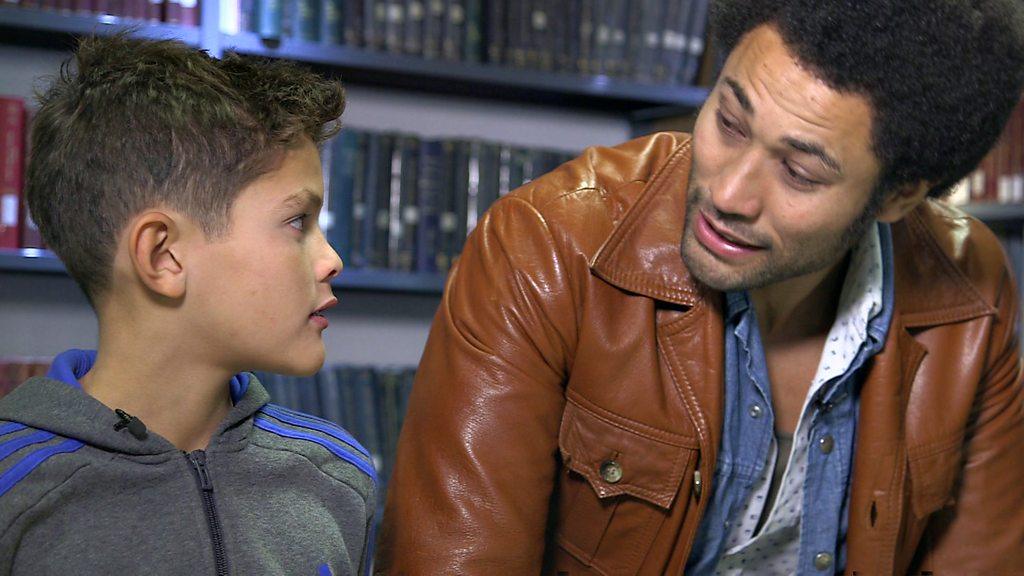Abolition of slavery: Six former slaves who worked for freedom
- Published
- comments
Who was Frederick Douglass? You can read more about his life below
On 23 August 1791, an uprising happened in the country of St Domingue (today Haiti) that played a crucial role in the abolition of the slave trade worldwide.
More than 100,000 slaves rose up against their French masters, starting a fight that would eventually help them gain freedom, as well as independence for the country, which had been a French colony.
The uprising was a turning point in human history, especially when it came to how people viewed slavery.
For this reason International Day for the Remembrance of the Slave Trade and its Abolition is commemorated on that date each year.
There are lots of famous people who are recognised for bringing slavery to an end.
In the UK, MP William Wilberforce is one of the most well known, for his role in taking the fight to parliament and having a law passed to stop the slave trade.
But lots of slaves and former slaves also took action to fight for freedom, not just for themselves but to make an impact in other countries too.
Here are some of the key figures that helped bring an end to slavery in different parts of the world.
Toussaint L'Ouverture
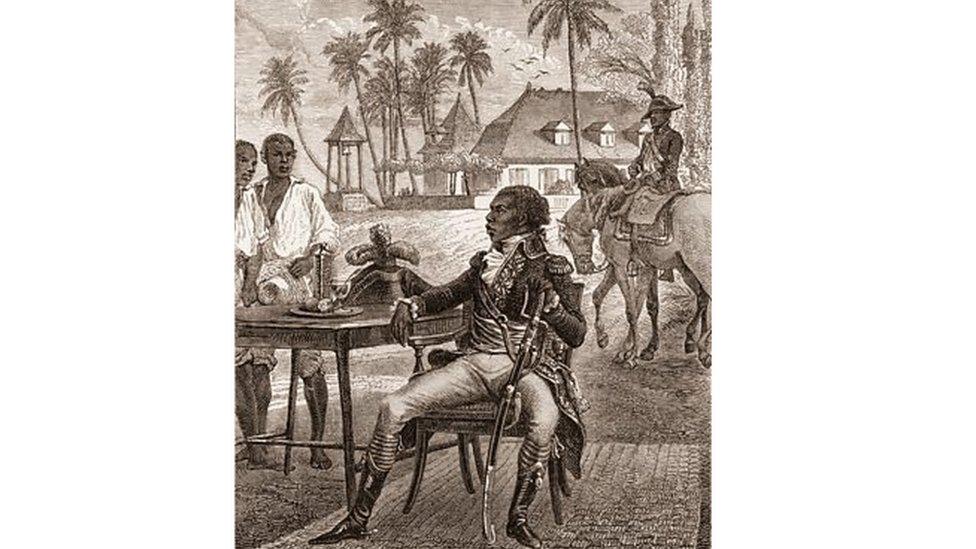
Toussaint L'Ouverture was a former slave who helped lead the revolution against the slave owners in Haiti.
He was intelligent and well-educated, so managed to buy his freedom soon after becoming an adult.
But when slaves revolted in 1791 Toussaint decided to join the fight against slavery.
The uprising ultimately led to the ending of slavery there and the creation of an independent country Haiti in 1804.

The French colony of St Domingue, became Haiti and the Spanish territory, called Santo Domingo, became the Dominican Republic
In this time Toussaint had become the leader of history's largest slave revolt, and later one of France's military commanders.
In 1793 while at war with France, Britain tried to capture St Domingue, but L'Ouverture's army won and the British troops had to withdraw.
This showed British officers what determined military opponents enslaved people fighting for their freedom could be, and helped to change the view people had of Africans as weak or not equal to white people.
L'Ouverture actions also indirectly helped bring an end to slavery in Britain too.
It had previously been argued that if Britain abolished slavery then its main rival, France, would take over its trade routes. But after the French empire fell and slavery was abolished in France in 1794, this was no longer a concern.
James Somerset
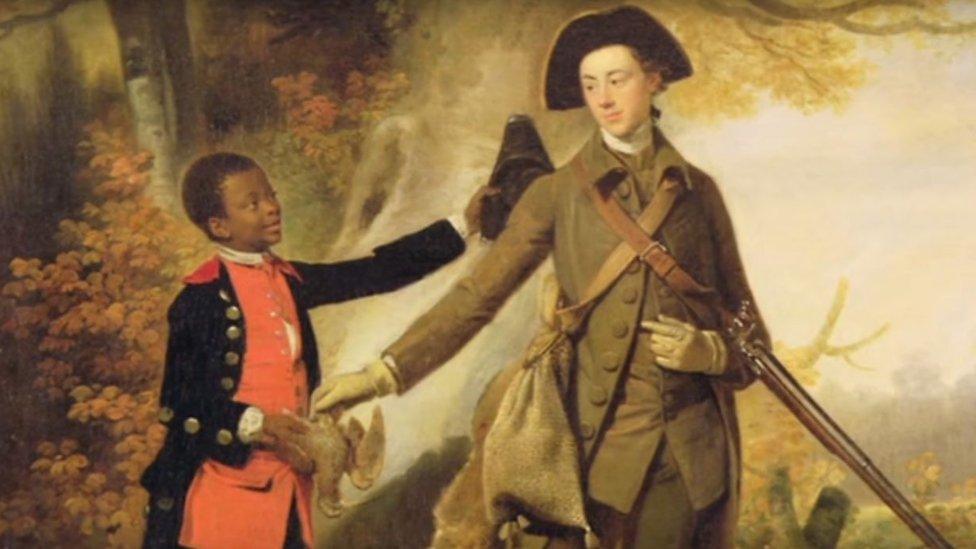
James Somerset was brought to England from Jamaica in 1769, but he escaped and used the British courts against his owners, to stop him being sent back to Jamaica.
In 1771, 19-year-old James and his lawyer Granville Sharp called for an area of law called 'Habeas corpus' to be applied to James.
This means a prisoner has to be brought before a court so it can decide if that person's imprisonment is lawful.
At this time, the slave-trade was legal in the UK and there were 15,000 slaves in England, but because James had been put in chains to be transported back to Jamaica Mr Sharp argued he was a prisoner.
This proved to be a big test case in the courts, with Sharp challenging the law to see slaves as human beings, rather than property.

Lord Mansfield, the Lord Chief Justice - the highest judge in the country - agreed and granted James Somerset his freedom, saying that slavery was so "odious" the English courts could not accept it.
Many people saw this judgment as outlawing slavery in Britain and it helped many other slaves also get their freedom.
However, although attitudes were changing it was still legal to own slaves, and they were still widely seen as 'property' rather than people.
Mary Prince
Olaudah Equiano and Mary Prince were two former slaves who wrote about their experiences
Mary Prince was born into slavery in around 1788, on Bermuda, off the coast of the United States, and was taken away from her family at the age of ten.
For years she was forced to work on several West Indian islands, making salt. The work was hard and caused sun blisters on exposed parts of the body and painful boils and sores on the legs.
But in 1828, she was brought from Antigua to England by her then owners, Mr and Mrs John Wood.
Slavery was still legal in the West Indies, but not in Britain, so when she reached London she left the Woods and joined a group called Anti-Slavery Society, whose aim was for the abolition of slavery in the British Empire.

This plaque in honour of Mary Prince is at University of London's Senate House, the site of the house where she lived in 1829
She told her life story to supporters of abolition and they helped her publish a book in 1831, called 'The History of Mary Prince'.
People were shocked to read about the treatment she had suffered, and it helped gain support for the anti-slavery movement at a time when there was a powerful, and ultimately successful, campaign to get freedom for all people who were slaves under the British Empire.
Frederick Douglas
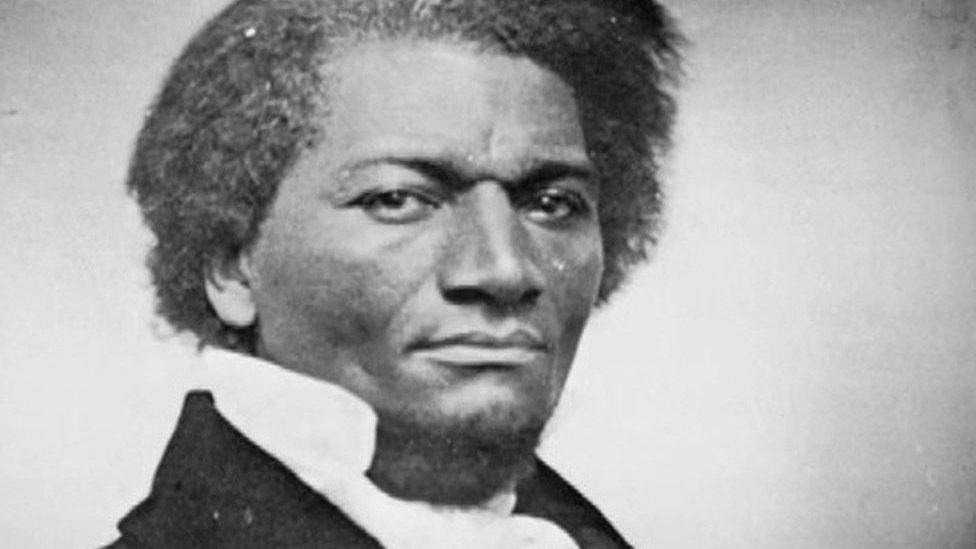
Frederick Douglass was an African American slave who managed to escape from slavery at the age of 20.
After he escaped in 1838, he got married, changed his surname, and joined the anti-slavery movement.
He quickly became one of the most well known campaigners of his time, with a talent for public speaking, as he travelled around telling people about life as a slave.
He also wrote two books about his experiences, and travelled to Ireland and the UK where he was impressed by how much more freedom black people had, compared to in the United States.

Frederick Douglass worked closely with President Abraham Lincoln and asked him to allow African Americans to join the army during the US Civil War
When he returned to the United States in 1847, Douglass began publishing his own anti-slavery newsletter, the North Star, and also became involved in the movement for women's rights.
Slavery came to an end following the American Civil ar, but Douglass was disappointed that ex-slaves still weren't allowed to vote.
He carried on campaigning for this as well as turning his attention to fighting racial prejudice.
Harriet Tubman
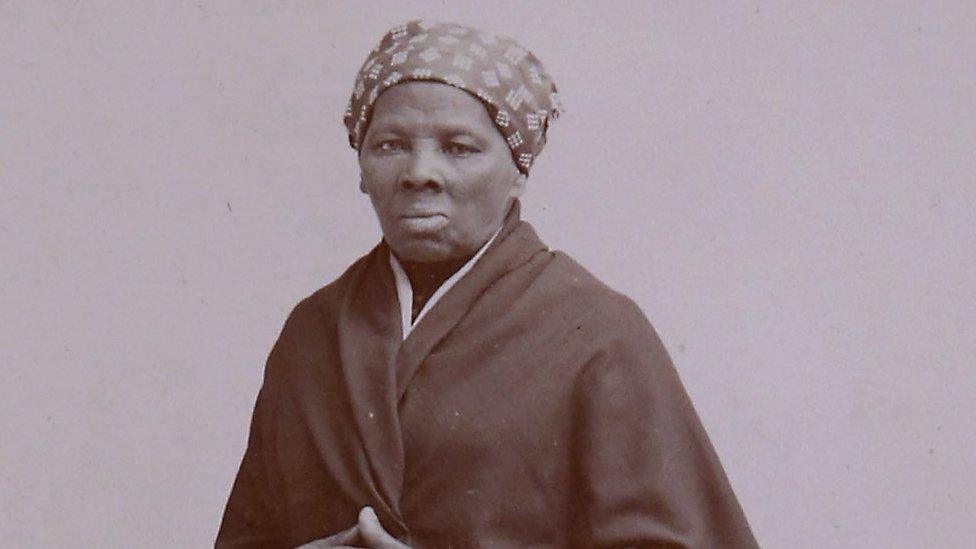
She was called Araminta Ross when she was born, but later changed her name to Harriet Tubman
Harriet was born into slavery in Maryland, in the United States in 1820, and grew up working in the cotton fields.
In September 1849, when she was 27 her owner died, and she escaped - along with her two younger brothers, leaving her husband behind.
After three weeks her brothers were scared and decided to go back, so Harriet continued on alone travelling almost 90 miles to the city of Philadelphia in Pennsylvania - a state where slavery was illegal.
She got a job as a servant in a house but when she found out some family members were going to be sold to her former owners, she realised she needed to help others escape too.
Along with a network of helpers known as 'The Underground Railroad', Harriet helped more than 70 slaves find freedom in other states or in Canada, including her brothers and her parents.
How Harriet Tubman escaped slavery and then helped others to do so.
By doing this she was taking enormous risks with her own freedom, and used in a variety of elaborate disguises to avoid being recognised and caught.
She also joined efforts to end slavery during the American Civil War, working as a scout and a spy, collecting information for the Union government, who were fighting against slavery.
In 1863, she led Union forces in a raid which liberated more than 700 slaves in South Carolina.
After the war, Tubman also gave speeches in support of women's right to vote, drawing on her own experiences in the fight against slavery.
Olaudah Equiano

Olaudah Equiano was born in 1745 in the country now known as Nigeria.
He was kidnapped and sold into slavery as a child and was taken to Barbados and later Virginia in the US.
In America, he was purchased by a sea captain called Michael Henry Pascal and he travelled all over the world with him.
He was eventually able to save up enough money to buy his own freedom in 1766 and settled in England the following year.
It was here that he became an abolitionist, fighting to end slavery.
He also became an author, publishing a book about his life in 1789.
It was a huge success and allowed people to understand more about the effects of slavery.
- Published9 June 2020
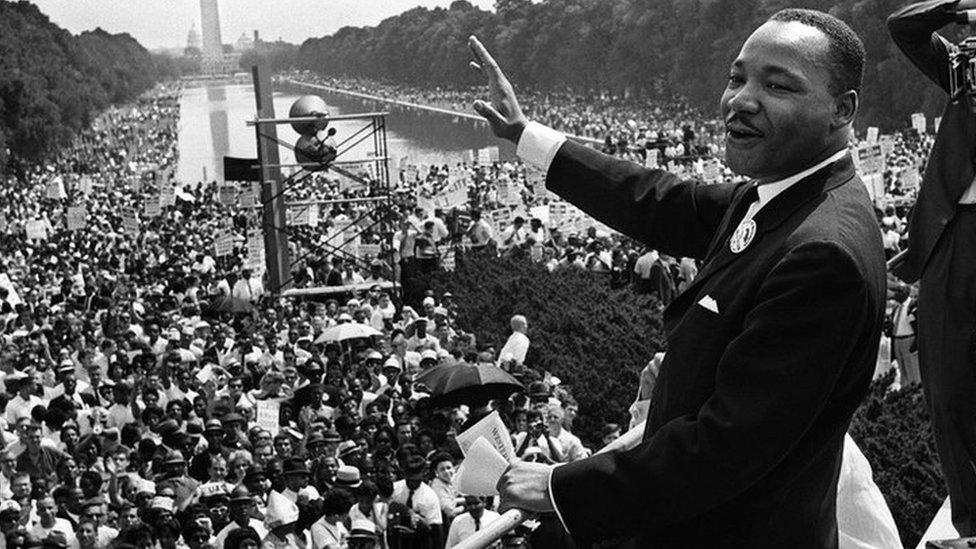
- Published10 June 2020

- Published27 October 2017
